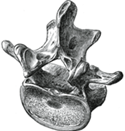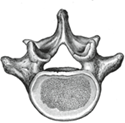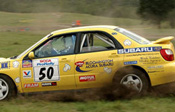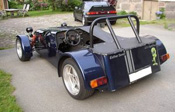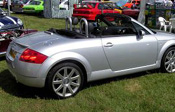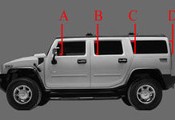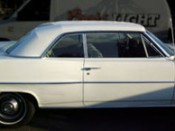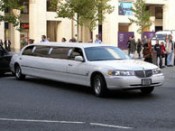Understeer is a term for a car handling condition during cornering in which the circular path of the vehicle’s motion is of a markedly greater diameter than the circle indicated by the direction its wheels are pointed. The effect is opposite to that of the oversteer and in simpler words understeer is the condition in which the front tires don’t follow the trajectory the driver is trying to impose while taking the corner, instead following a more straight line trajectory.
This is also often referred to as pushing, plowing, or refusing to turn in. The car is referred to as being ‘tight’ because it is stable and far from wanting to spin.
As with oversteer, understeer has a variety of sources such as mechanical traction, aerodynamics and suspension.
Classically, understeer happens when the front tires have a loss of traction during a cornering situation, thus causing the front-end of the vehicle to have less mechanical grip and become unable to follow the trajectory in the corner.
In modern race cars, especially open-wheel cars, understeering is caused mainly due to the aerodynamic configuration. A lack of heavy aerodynamic load in the front of the vehicle prevents the front tires from gaining enough traction. At the same time, having a heavier aerodynamic load at the read-end of the vehicle gives the rear tires more traction than the front tires, which will cause understeer. Also, suspension balance should take into account the types of surfaces being driven – differing levels of friction in each surface influence the potential understeer behavior. Camber angles, ride height and tire pressure are important factors that determine the understeer/oversteer handling condition.
Understeer – Common practice
It is common practice among automobile manufacturers to configure production cars to have a slight understeer by default. If a car understeers slightly, it tends to be more stable if a violent change of direction occurs, improving safety.
Understeer Physics
Under all high speed (greater than approximately 10mph (16 km/h) for a typical automobile) cornering conditions a wheeled vehicle with pneumatic tires develops a greater lateral (i.e. sideslip) velocity than is indicated by the direction in which the wheels are pointed. The difference between the circle the wheels are currently tracing and the direction in which they are pointed is the slip angle. If the slip angles of the front and rear wheels are equal, the car is in a neutral steering state. If the slip angle of the front wheels exceeds that of the rear, the vehicle is said to be understeering. If the slip angle of the rear wheels exceeds that of the front, the vehicle is said to be oversteering.
An old bit of racing humor says that an understeering car goes through the fence nose first, an oversteering car goes through the fence tail first, and with a neutral-steering car, both ends go through the fence at the same time.
Understeer by Design
Any vehicle may understeer or oversteer at different times based on road conditions, speed, available traction, and driver input. The design of a vehicle, however, will tend to produce a particular “terminal” condition when the vehicle is pushed to and past its limits of adhesion. “Terminal understeer” refers to a vehicle which, as a function of its design, tends to understeer when cornering loads exceed tire traction.
Terminal handling balance is a function of front/rear relative roll resistance (suspension stiffness), front/rear weight distribution, and front/rear tire traction. A front-heavy vehicle with low rear roll stiffness (from soft springing and/or undersized or nonexistent rear anti-roll bars) will have a tendency to terminal understeer: its front tires, being more heavily loaded even in the static condition, will reach the limits of their adhesion before the rear tires, and thus will develop larger slip angles. Front-wheel drive cars are also prone to understeer because not only are they usually front-heavy, transmitting power through the front wheels also reduces their grip available for cornering.
Although understeer and oversteer can each cause a loss of control, many automakers design their vehicles for terminal understeer in the belief that it is easier for the average driver to control than terminal oversteer. Unlike terminal oversteer, which often requires several steering corrections, understeer can often be reduced simply by reducing speed.
Racing drivers generally prefer a neutral condition (with a slight tendency toward understeer or oversteer, depending on the track and driver preference) because both understeer and oversteer conditions will scrub off speed while cornering.
